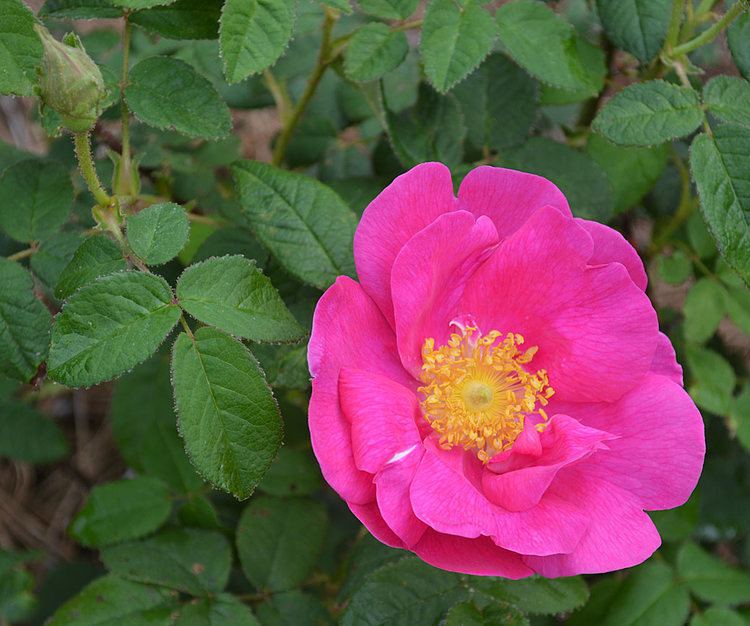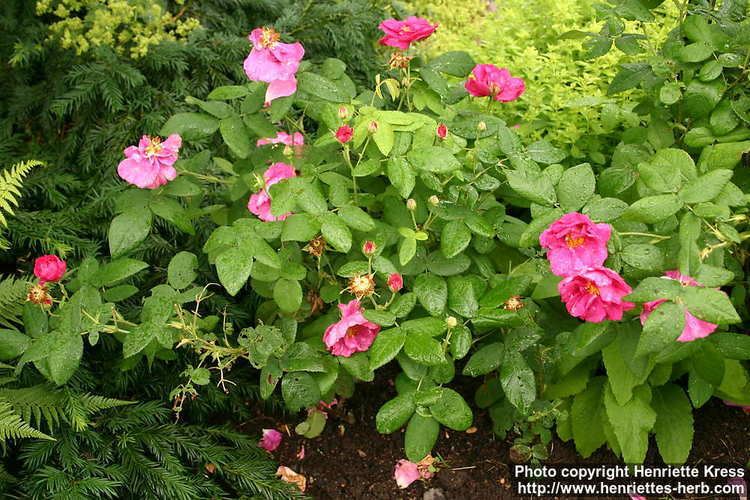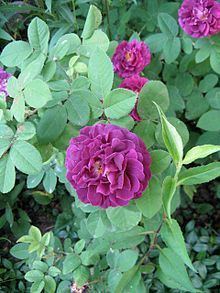Scientific name Rosa gallica Rank Species | Genus Rosa Higher classification Rose | |
 | ||
Similar Rose, Centifolia roses, Damask rose, Rosa moschata, Rosa pimpinellifolia | ||
Rosa gallica with translation text
Rosa gallica, the Gallic rose, French rose, or rose of Provins, is a species of flowering plant in the rose family, native to southern and central Europe eastwards to Turkey and the Caucasus.
Contents

Description

Rosa gallica is a deciduous shrub forming large patches of shrubbery, the stems with prickles and glandular bristles. The leaves are pinnate, with three to seven bluish-green leaflets. The flowers are clustered one to four together, single with five petals, fragrant, deep pink. The hips are globose to ovoid, 10–13 mm diameter, orange to brownish.
Gallica group

Cultivars of the species R. gallica and hybrids close in appearance are considered as a cultivar group, the Gallica Group roses. Their exact ancestry is usually unknown and other species may be involved. The Gallica Group roses share the vegetative characters of the species, forming low suckering shrubs. The flowers can be single, but most commonly are double or semidouble. The colours range from white (rare) to pink and deep purple. All Gallica Group roses are once flowering. They are easily cultivated.
Apothecary's rose

Plants with semidouble deep pink flowers have been treated as either a variety, under the name R. gallica var. officinalis, or as a cultivar, R. gallica 'Officinalis'. It is also called the apothecary's rose, the crimson damask rose, or the red rose of Lancaster. It is the county flower of Lancashire. A cultivar R. gallica var. officinalis 'Versicolor', with striped pink blooms, is also known as Rosa mundi.
The names Rosa gallica f. trigintipetala or Rosa 'Trigintipetala' are considered to be synonyms of Rosa × damascena.
Cultivation

The species is easily cultivated on well drained soil in full sun to semishade; it can survive temperatures down to −25 °C. It is one of the earliest cultivated species of roses, cultivated by the Greek and Romans and commonly used in mediaeval gardens. In the 19th century it was the most important species of rose to be cultivated, and most modern European rose cultivars have at least a small contribution from R. gallica in their ancestry.
The following cultivars and hybrids have gained the Royal Horticultural Society's Award of Garden Merit.

